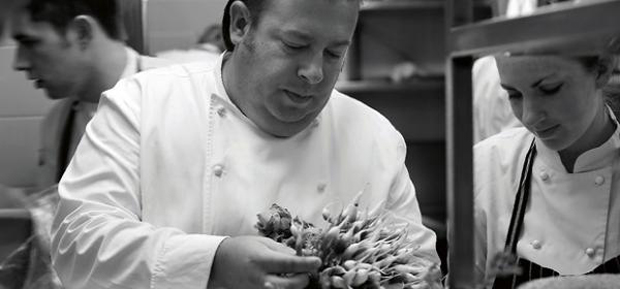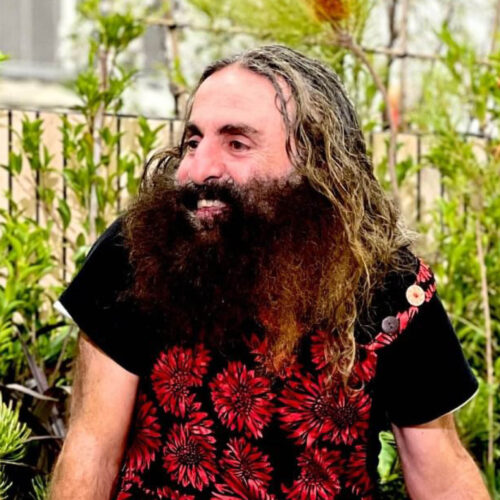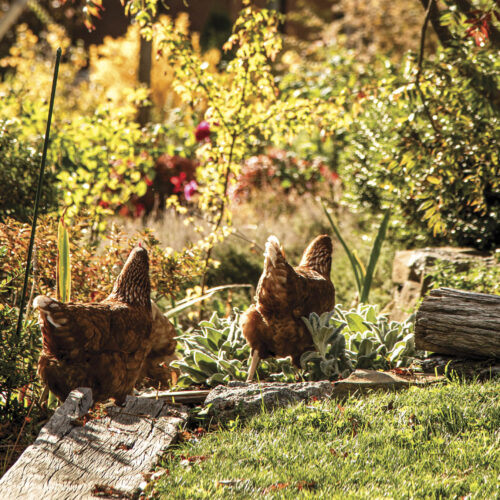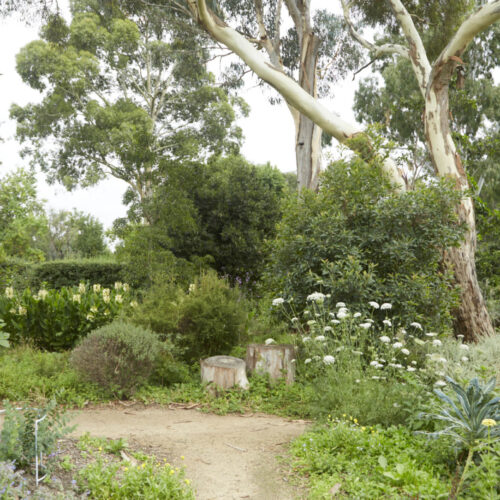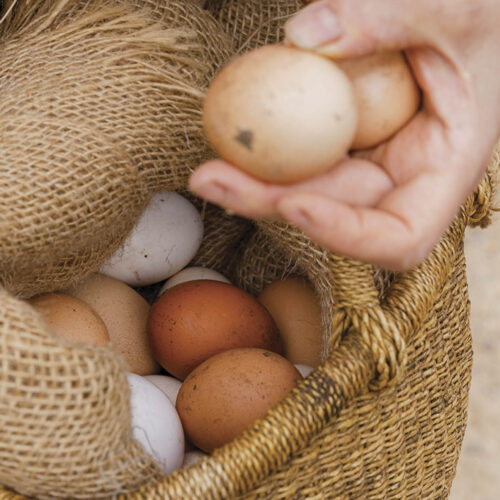Recipes from the soil up
2013-03-18T05:42:39+11:00
For renowned chef (and keen gardener) Peter Gilmore, the connection between food and nature is vital. His book, Quay, Food Inspired by Nature, features beautiful cuisine that is as delectable to look at as it is to eat, writes JACQUELINE FORSTER.
Peter Gilmore says his award-winning menu is built “from the soil up”. Gilmore may be the celebrated Head Chef at Quay restaurant in Sydney, with some star appearances on Masterchef, but he has one foot firmly planted in his own backyard.
He’s been experimenting with unusual and heirloom crops in his own garden for years, while also fostering relationships with growers and producers across the country. His sumptuous book, Quay, Food Inspired by Nature, is an ode to the beauty of food. Artistic and adventurous, Gilmore hopes to inspire with nature-based cuisine.
His recipes include plants or parts of plants rarely considered by chefs or many gardeners, from native violets and okra shoots, to nasturtium buds and rosemary flowers.
“My food is nature based, which means it is inspired by the diversity of nature and how incredible it is,” says Gilmore. “I started growing vegetables for myself in my home garden about six years ago. It’s something that has always been an interest of mine, but previously I never had the space.
“Initially I was just growing herbs, then I made a couple of vegetable beds and planted peas and carrots. I fell in love with the whole process of planting seeds and watching them grow, which in turn led to lots of little discoveries.”
Discoveries that set Gilmore on a path of culinary experimentation. “When I was growing peas I found that the pea flowers themselves, before they turn into pods, were fantastic and made a beautiful garnish on a plate.”
Further investigation followed. “I began reading seed catalogues and soon discovered a whole range of vegetables you just didn’t see in the marketplace – lots of heirloom varieties; all different types and colours of carrots and radishes,” he enthuses.
“I started growing things like red core radish, which has a beautiful spiral sunburst of red inside, and that led to other rare varieties like white hailstone and French breakfast radishes. I began thinking it would be great to get this stuff grown on a scale that I could use in the restaurant.”
A fruitful collaboration
Commercial farmers, however, showed little interest in growing Gilmore’s rare produce. “They were uninspired to do anything different and weren’t willing to risk growing purple carrots or pea flowers for what was then, and still is, a niche market,” he says.
Luckily, Gilmore met Richard and Nina Kalina who were growing organic raspberries and red currants in the Blue Mountains, west of Sydney.
“Richard brought his raspberries down to the restaurant and they were amazing!” says Gilmore. “The flavour was just brilliant. So I asked if he was interested in growing unique vegetables for Quay.”
At the time, the Kalinas had a vacant paddock they weren’t using for the berries so they decided to “give it a go”.
“We started off with things like stem lettuce, Japanese white turnips, white and red carrots and Chinese artichokes,” Gilmore explains. “Nina and Richard were committed to growing organically, which was an added bonus for me because I think organic produce actually tastes better.”
Despite some teething problems ?with pest control and crop failure, ?the collaboration between chef and grower proved fruitful; trial and error helping to establish vigorous crops of red core radish, colourful carrot varieties, heirloom white cucumbers, sour Mexican salad cucumbers and ?wild strawberries.
“Fraise des bois, exceptionally sweet and fragrant wild strawberries, are everywhere in Europe but they are not available in Australia,” says Gilmore.
“The climate in the Blue Mountains ?is perfect for them and last year Richard was producing 100 punnets a week ?(in season) for Quay, which is an amazing yield. In fact he’s planted even more this year.”*
I fell in love with the whole process of planting seeds and watching them grow.
Diversity and preservation
To protect diversity, Gilmore promotes the preservation of rare and heritage breeds of sheep, pigs and chickens. “Not that long ago all the pork you were able to buy in Australia was mass produced, flavourless and dry,” he says.
“A few really enterprising and amazing farmers, with the support of chefs, got behind breeds like the Berkshire and Large English White to revive interest in heritage breeds. The industry is still in its infancy, but at the end of the day if rare breeds aren’t consumed they will die out forever.”
He’s also excited about heritage lamb. “I buy lamb from Richard Gunner, a farmer in South Australia who has the largest herd of pure Suffolk lambs in Australia. The superior quality of his Suffolk lamb is incomparable to the regular stuff most people get.”
Most lamb produced in Australia is a by-product of the wool industry; ?while Suffolk, Southdown and Texel are rare and heritage breeds bred exclusively for the table.
At home, in the lush surrounds of his small vegetable garden, Gilmore is relaxed and happy to talk at length about his deep interest in organic gardening. Brimming with rare vegetables like white squash, mini cucumber and the attractively patterned heirloom ying yang bean, which Gilmore proudly shows off, the garden is a sanctuary after long hours in the restaurant kitchen.
“The food industry is really hard work – you do such long hours – so it is a bit of a luxury to be able to spend time sourcing products,” says Gilmore. “I think it is a natural progression (once you’ve perfected your skills and developed your style) to look beyond the ingredients to where they come from.”
Constantly seeking out new and interesting produce to feature in the restaurant, Gilmore delights in unusual colours and different flavours.
“It’s a personal passion for me and I’m lucky enough to be able to find farmers and talk to them. From there it creates momentum, chefs get inspired and a movement evolves.”
A natural movement
While Quay’s recipes may seem a little inaccessible to the average home cook, not equipped with the shiny gadgets and staff of a commercial kitchen, Gilmore feels that a commitment to organics and diversity at the upper echelons of the food industry will have a trickle-down effect to the greater population.
“People go to restaurants to experience something they don’t have at home,” he says. “However, I think you can apply the same principles at home. Just having a little vegie patch out the back and being able to pull out something really beautiful and unusual like Japanese white turnips, knowing how fresh and sweet they are, is great. At home, I might just boil them and put some butter and salt on them, which is amazing in itself.”
Gilmore believes this act of turning back to nature and growing your own is a burgeoning trend. “In the last few years there’s been a great upsurge of people interested in growing their own fruit and vegetables. Some would say it is due to economic conditions, but I think it is far more profound than that,” he says. “I think people are so busy leading high-tech lives that they are missing the connection with nature. They want to get their hands dirty again.
“Even if you’re just growing herbs at home – picking a bunch of parsley or basil to put into your pasta – growing your own food gives you such a buzz.”
* As we went to print, after prolonged heavy rain, Richard and Nina Kalina were battling to save their wild strawberry crop from leaf scorch fungal disease, powdery mildew and slugs.

